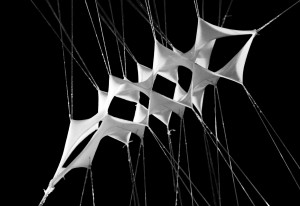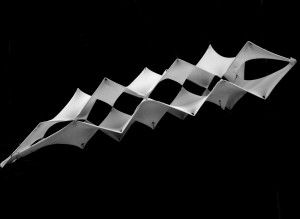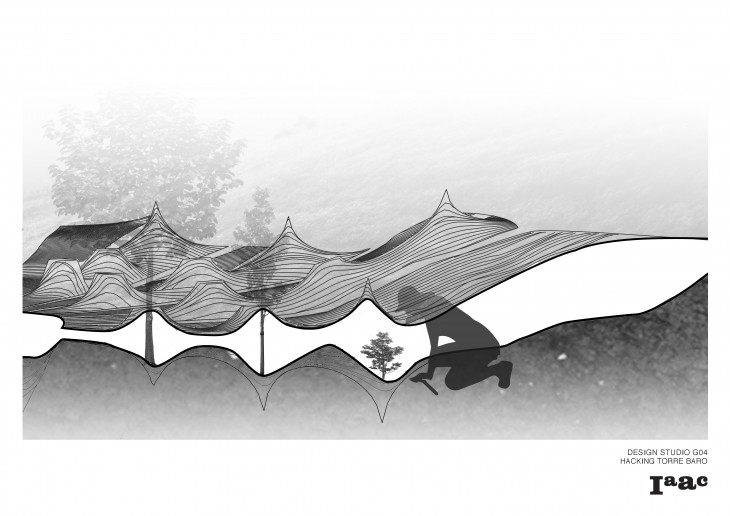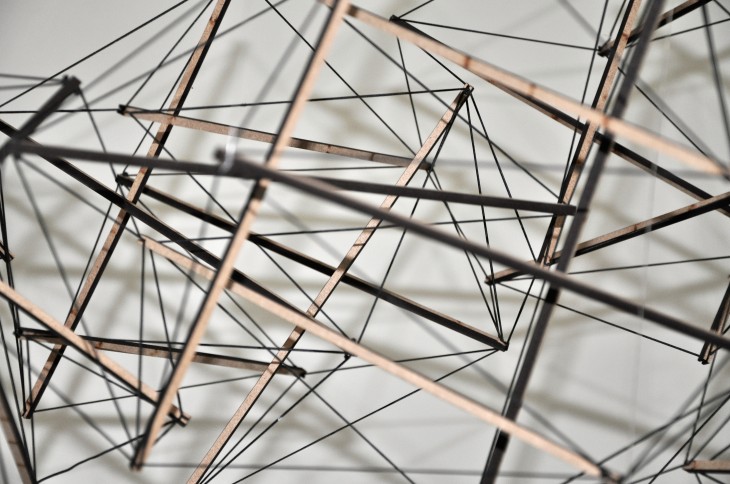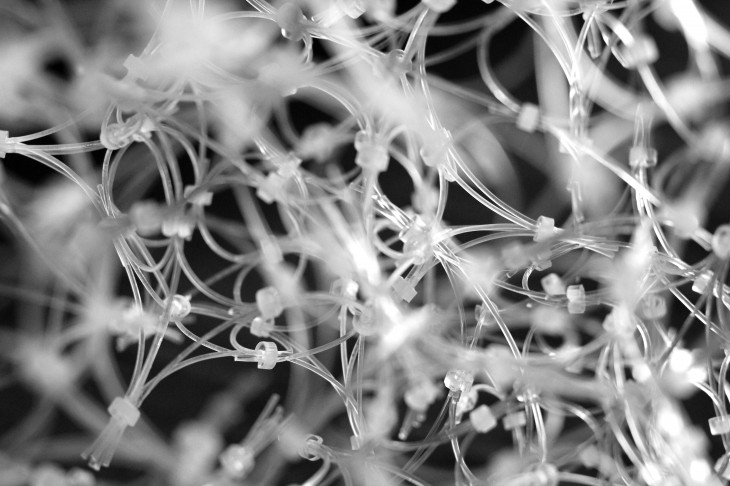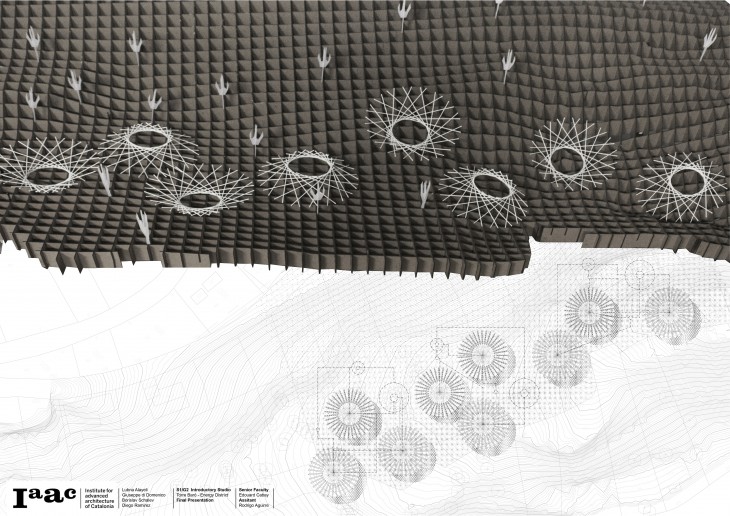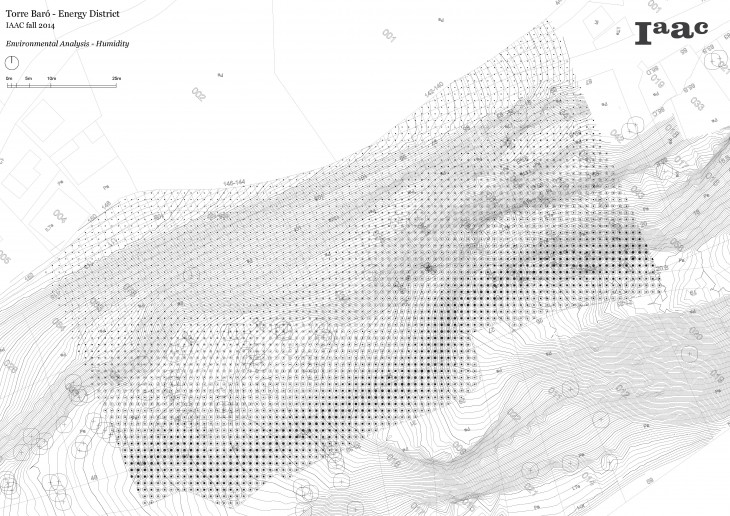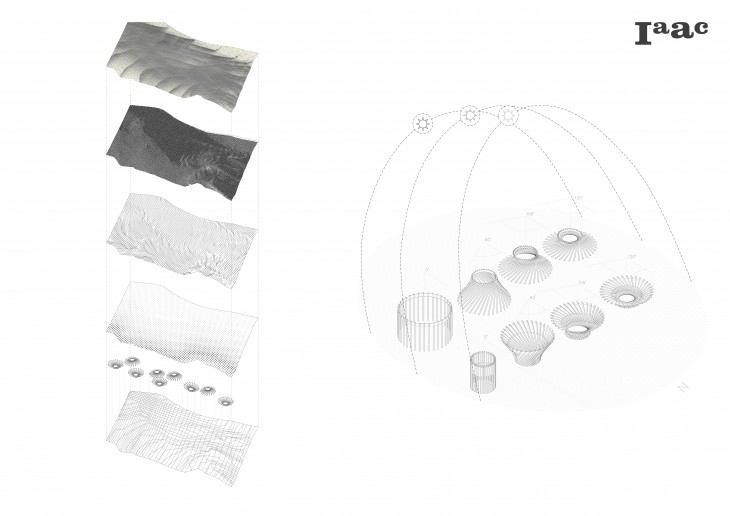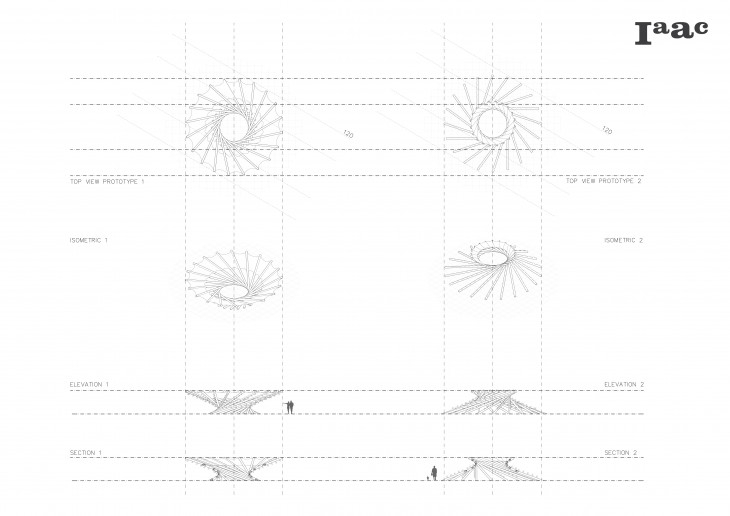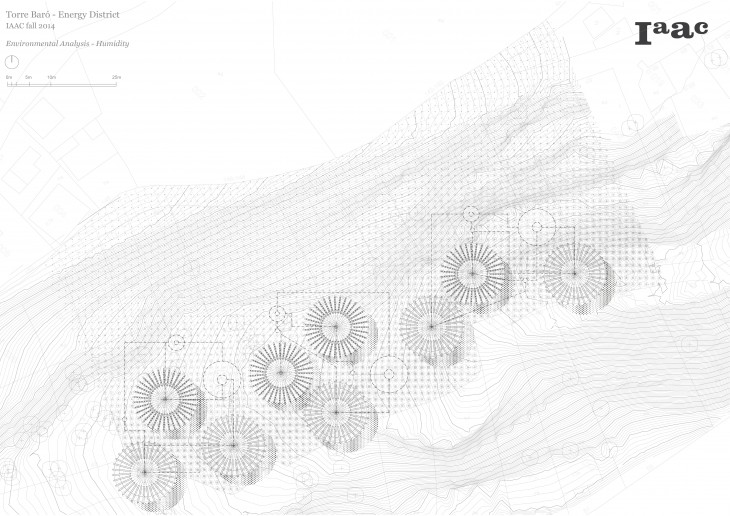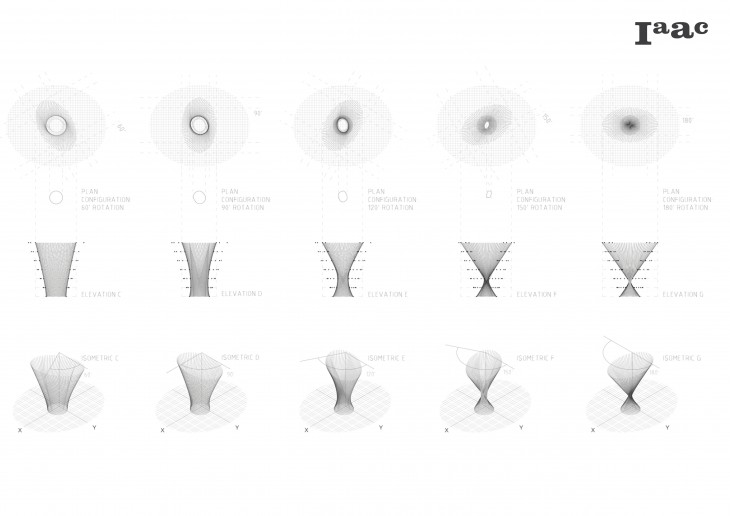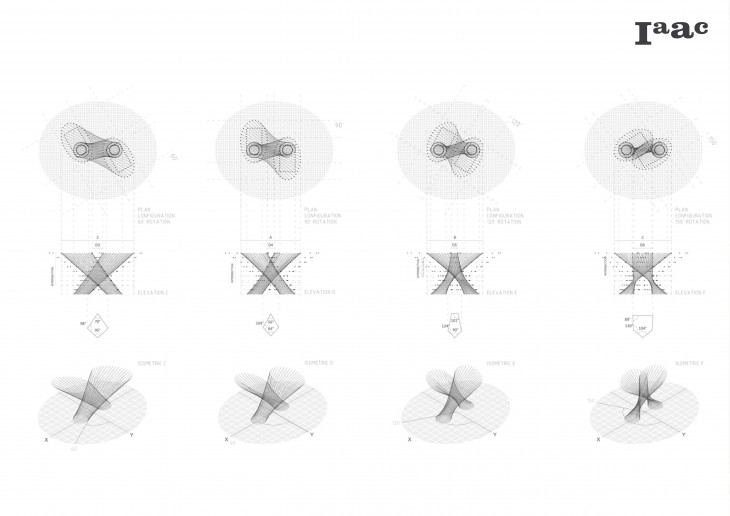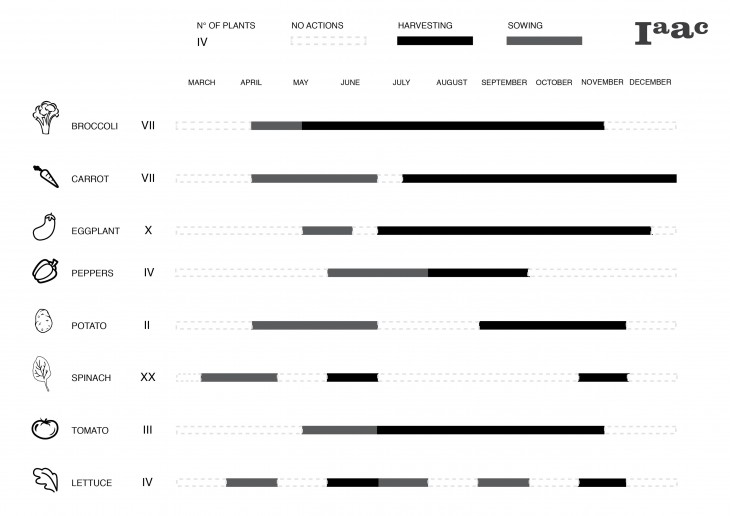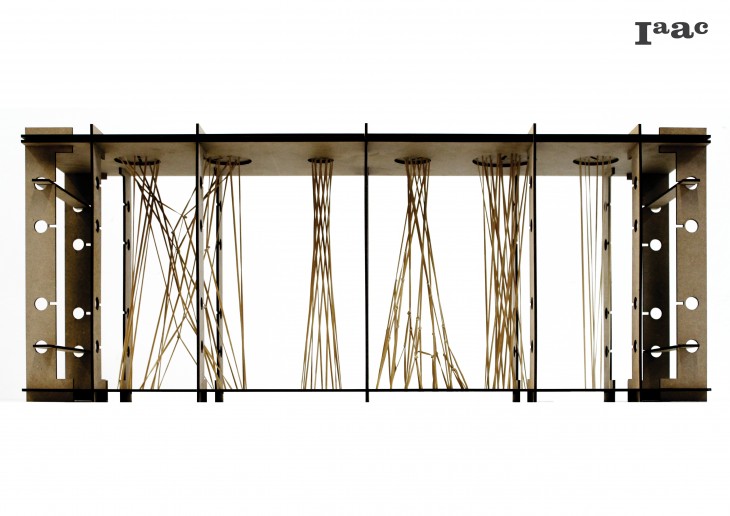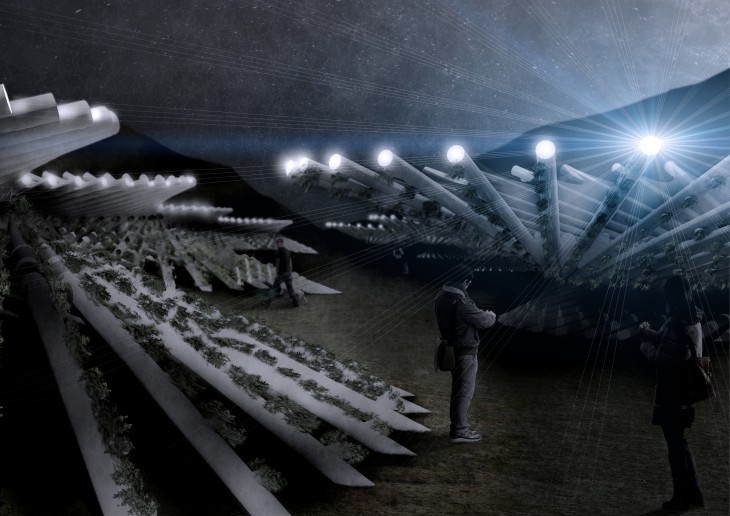A study of the orography, the elevated terrain of Torre Baro. The Orographic precipitation, also known as relief precipitation, is generated by a forced upward movement of air upon encountering a physiographic upland. This is resulted by the anabatic or upward vertical propagation of warm moist air up an orographic slope caused by daytime heating of the mountain barrier surface. By adding isolation to the surface to create a controlled directional flow of moisture and heat, enabling the typography to act as a machineless greenhouse.
Using tensile structures in the Form finding process enables flexibility and free manipulation of spaces to hack the terrain. In this case, forming an entirely new typography of its own providing the necessary structure for movement of air, humidity and water. These elements are essential for the greenhouse to function in a harmonious manner without the aid of any mechanical elements.
The concept of «Propagation» is dominent in this project. Consequently, the use of propagation for plants, a method of «Horticultural Cloning» using precise cutting techniques. Further exploration of these methods have been proven highly productive for commercial agriculture of various types of produce. This project will demonstrate the integration of propagating plants, natural elements and form to hack nature.

